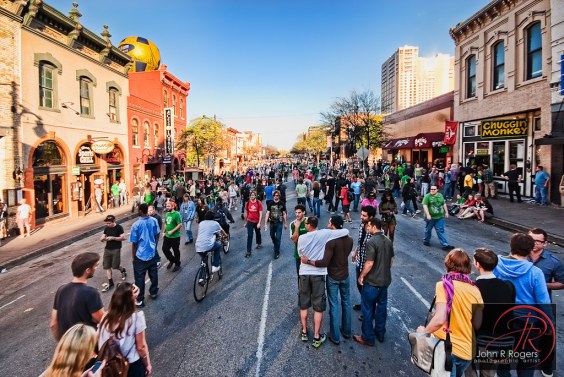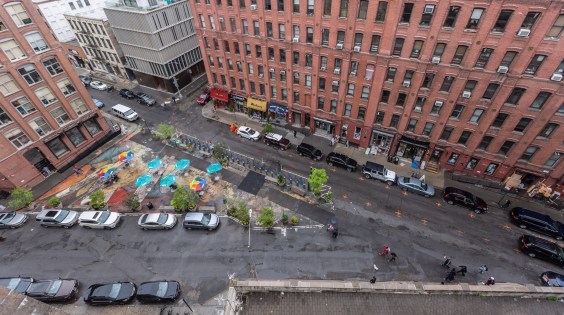High-speed rail is one of the Obama administration's most prized policy goals, with $13 billion getting earmarked in the coming year alone to help break ground on up to 11 proposed regional corridors. But what will the U.S. get for its money? A lively Senate hearing yesterday attempted to answer that question.
 Will all 11 high-speed rail plans end up getting a piece of the action? (Photo: WSJ)
Will all 11 high-speed rail plans end up getting a piece of the action? (Photo: WSJ)Pennsylvania Gov. Ed Rendell (D), the co-chairman of Building America's Future
and an unabashed high-speed rail evangelist, urged senators to shrug
off their post-bailout reluctance to approve large spending projects.
The White House's $13 billion commitment, Rendell argued, is only a
down payment on a workable system.
"We can't do
infrastructure on the cheap," Rendell said. "We have to find the political courage to find a way to pay for it."
Building
high-speed rail along the California coast, he added, is estimated to
cost as much as $40 billion. A northwestern network is projected to
cost $25 billion. Similar long-term funding problems, as it happens, are also haunting lawmakers who aim to overhaul federal transportation policy.
Rendell
suggested that a national infrastructure bank, independent of the
government, should be tapped to direct money to high-speed rail
proposals without political concerns influencing the process. "The
public wants that," he said. "The public
doesn’t want transportation dollars authorized through [the existing]
system."
That outcome is highly unlikely, however, given that the federal DOT already has released its guidelines
for an internal ranking of regional rail plans. And Federal Railroad
Administrator Joseph Szabo was on hand to defend the administration's
methods.
"Our vision matches,
frankly, what they've done in Europe," Szabo told senators. Meanwhile,
Rendell kept imploring the lawmakers to reconsider the Obama
administration's 110-mph ballpark for defining what constitutes
"high-speed".
With high-speed trains topping 200 mph in China
and 160 in France, the governor said, "we're absolutely consigning
ourselves to second-class citizenship" by setting the benchmark at 110
mph.
Tom Skancke, a member of the transportation revenue panel that last year called for a major gas-tax hike to fund system-wide reform, echoed Rendell's concerns with a call to publicly promote broad reform:
Idon't think the nation as a whole has a plan for high-speed rail. ...The way we get there is, we have to sell the American public,particularly on rail, as we get people out of their horse and buggy. Itis a cultural shift. We have to convince the American people thathigh-speed rail is going to be predictable, going to be on time, goingto be affordable. ... We know what the alignment should look like. Ijust believe we need to step up and do it.
Amtrak CEO Joseph Boardman also sought to bring Rendell and Skancke's ambitions down to earth.
Citing the Acela train's moderate progress in taking over market share in the northeast corridor,
Boardman said the U.S. is "not a train-riding culture" -- an
eyebrow-raising admission from the chief of the nation's largest
passenger rail service. "With high-speed rail, speed is not the issue,"
he said. "Convenience and trip times are."
Boardman also
did his part to guard Amtrak's turf, suggesting that high-speed rail
planners "build a culture of riding the train" by ensuring that the
projects receiving funding are easily connectable to the network he
runs. "People want to be seamless," he said.
As for the
senators in attendance, most put in palpable plugs for their own
home-state proposals. Texan Kay Bailey Hutchison, the commerce
committee's senior GOPer, was abuzz with the possibilities of the Texas
"T-Bone." Sen. Mark Udall (D-NM) spoke of a western corridor linking Albuquerque and Texas.
But
with Rendell warning that his fellow governors are equally convinced of
the merits of their own local rail plans, the task of separating the
wheat from the chaff was rarely discussed.




